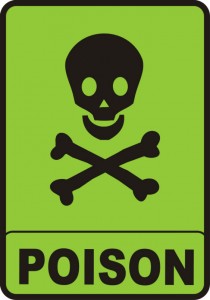Carbon Monoxide and Your Fireplace
Summer has officially ended, which means the next frigid New York winter is one season closer. As everyone starts putting away t-shirts and short and pulling out parkas and mittens, homeowners have another task on their minds. Winter is also fireplace season, so everyone is flocking to have their chimneys swept and inspected. Those who neglect to service their fireplaces and chimneys this year are putting the health of their families and homes at risk. While there are a variety of different risks associated with a fireplace in disrepair, none is more insidious than carbon monoxide.
What Is Carbon Monoxide?
Carbon monoxide is small gaseous molecule that results from all types of combustion. This means that carbon monoxide is present in car exhaust, stoves, lanterns, wood- and charcoal-burning units, and gas ranges. If the fuel burns in an enclosed space, the carbon monoxide product quickly builds up in the air. As the concentration of carbon monoxide in the air increases, so does the risk of carbon monoxide poisoning. To make matters worse, you cannot tell if deadly gas is present by smell or taste or sight. Only a specialized carbon monoxide detector can determine its presence.
Poisoning by carbon monoxide can occur within minutes depending on the size of the space and the rate at which it fills up. The carbon monoxide enters the blood stream after inhalation and attaches to the red blood cells before the oxygen has a chance. Thus, carbon monoxide is distributed throughout the body in place of the absolutely vital oxygen, eventually resulting in severe tissue damage and death. Symptoms of carbon monoxide poisoning include headache, dizziness, nausea, and confusion. If the victim is not moved to clean air, unconsciousness quickly ensues. The early symptoms mimic much less dangerous illnesses, so many people do not think about moving to an open area.
What Does This Have To Do With My Fireplace?
Carbon monoxide is a product of any type of burning, so if your fireplace burns wood, charcoal, pellets or gas, it produces carbon monoxide. A properly installed fireplace and chimney should safely vent the carbon monoxide out of the home, but a number of issues can arise to hamper that ability.
Any type of chimney obstruction contributes to the risk of carbon monoxide poisoning. If the path of gases up the flue is blocked, the gases will back up into the home. Different types of obstructions include animals, nests, or a dirty chimney. You can have a mason install a chimney cap to prevent animals from living and building nests inside the flue. To prevent creosote and other fire products from building up and closing off the flue, you should have your chimney swept and inspected at least once per year.
While obstruction is the most common cause for carbon monoxide in the home, you should schedule an inspection with a professional chimney sweep company to determine if your fireplace poses any other types of risks. If you live in the Suffolk County area of Long Island, New York, contact Chief Chimney Services, Inc. for a professional consultation.

